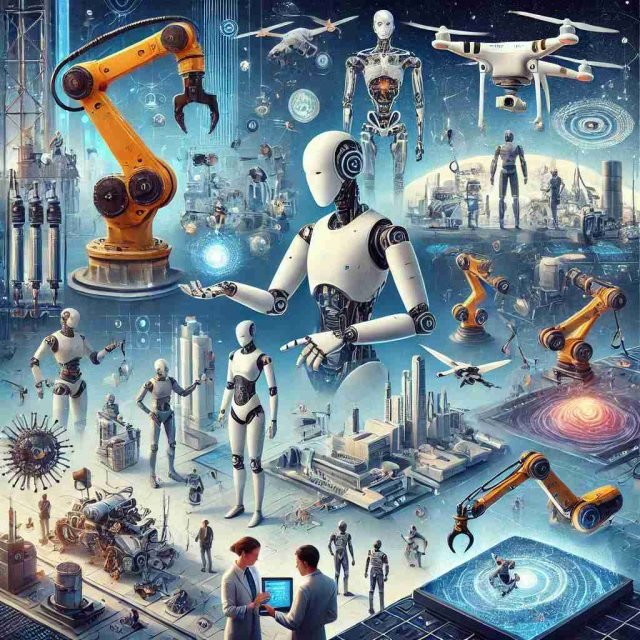Types of Robotics : Robotics is an ever-evolving field that is shaping various industries and our daily lives. From automated systems in factories to AI-powered assistants, robotics is used in numerous applications. This guide explores different types of robotics and their impact.
1. Industrial Robots
Industrial robots enhance productivity and precision in manufacturing. They handle repetitive tasks like welding, assembly, and packaging. Common types include:
- Articulated Robots (multi-jointed for flexibility)
- SCARA Robots (used for assembly tasks)
- Delta Robots (fast pick-and-place operations)
- Cartesian Robots (linear movement for precision)
2. Service Robots
These robots assist in non-industrial settings such as healthcare, hospitality, and homes. Examples include:
- Medical Robots (surgical assistants)
- Household Robots (vacuum cleaners, smart assistants)
- Hospitality Robots (automated service attendants)
- Security Robots (monitoring and surveillance systems)
3. Humanoid Robots
Humanoid robots resemble human beings and are used in customer service, research, and assistance. Some well-known examples are:
- AI-driven customer service robots
- Educational robots for interactive learning
- Companion robots for elderly care
4. Autonomous Robots
These robots operate independently using AI and sensor technology. Examples include:
- Self-driving vehicles (used in transport and delivery)
- Automated drones (used in agriculture, surveillance, and logistics)
- Robotic warehouse assistants (for inventory management)
5. Military & Defense Robots
Robots play a significant role in defense operations. Common applications include:
- Explosive ordnance disposal (EOD) robots
- Surveillance and reconnaissance drones
- Wearable robotic exoskeletons
6. Swarm Robotics
Swarm robotics involves multiple small robots working collaboratively, inspired by natural systems like ant colonies. Applications include:
- Disaster response and search operations
- Agricultural automation
- Ecosystem monitoring
7. Soft Robotics
Soft robots are built using flexible materials, making them suitable for delicate tasks. These robots are used in:
- Medical applications (biomedical devices and prosthetics)
- Wearable robotic systems
8. Space Robots
Space exploration relies on robotics for deep-space missions. Key examples include:
- Planetary rovers (used for surface exploration)
- Robotic arms on space stations
- Autonomous robotic assistants for astronauts
Final Thoughts
Robotics continues to evolve, influencing multiple industries and daily life. As technology advances, the future promises even more sophisticated robotic systems that will further enhance efficiency and innovation.



Very good https://is.gd/tpjNyL
Good https://is.gd/tpjNyL